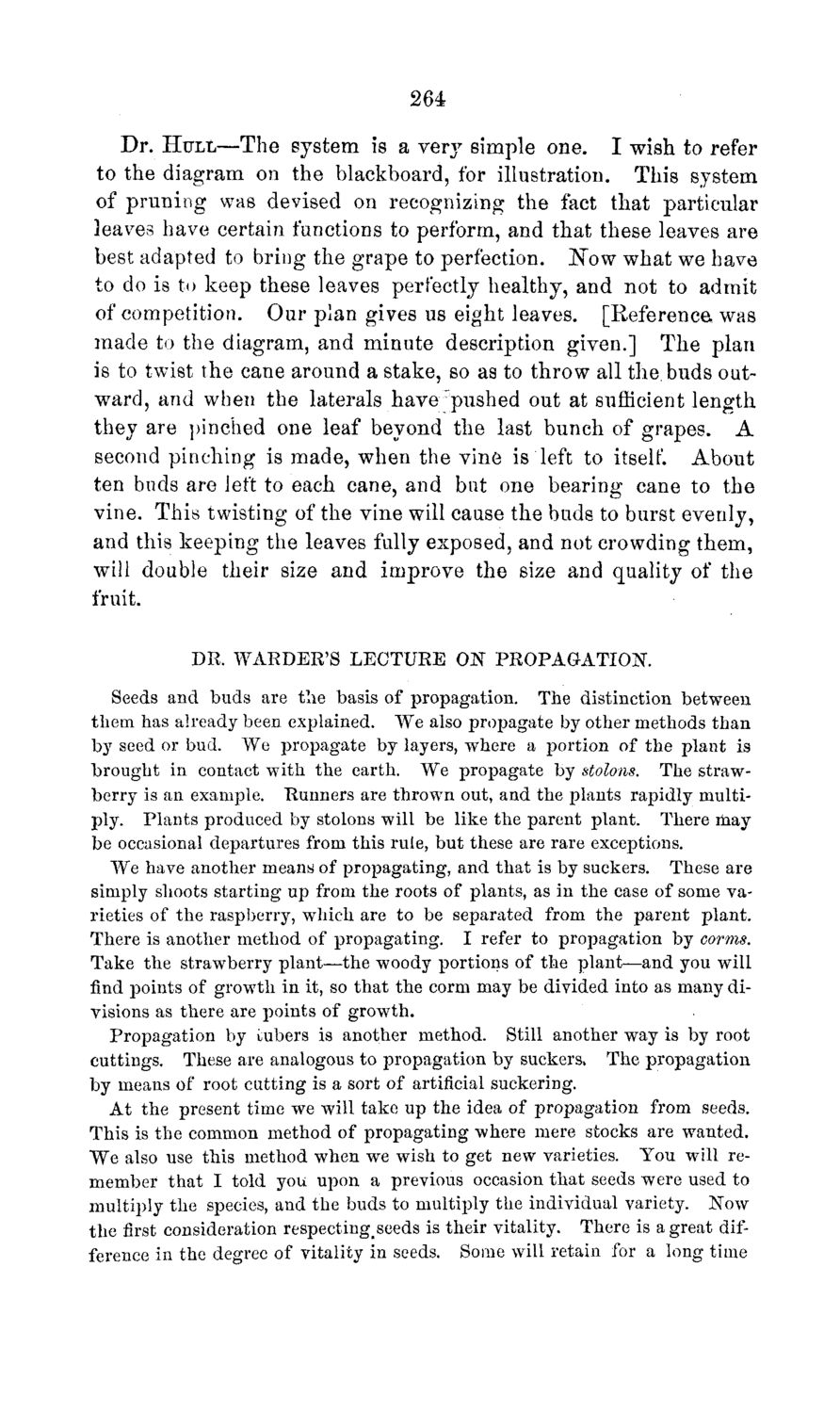| |
| |
Caption: Board of Trustees Minutes - 1869
This is a reduced-resolution page image for fast online browsing.

EXTRACTED TEXT FROM PAGE:
2U Dr. HULL—The system is a very simple one. I wish to refer to the diagram on the blackboard, for illustration. This system of pruning was devised on recognizing the fact that particular leaves have certain functions to perform, and that these leaves are best adapted to bring the grape to perfection. Now what we have to do is to keep these leaves perfectly healthy, and not to admit of competition. Our plan gives us eight leaves. [Reference was made to the diagram, and minute description given.] The plan is to twist the cane around a stake, so as to throw all the. buds outward, and when the laterals have -"pushed out at sufficient length they are pinched one leaf beyond the last bunch of grapes. A second pinching is made, when the vine is left to itself. About ten buds are left to each cane, and but one bearing cane to the vine. This twisting of the vine will cause the buds to burst evenly, and this keeping the leaves fully exposed, and not crowding them, will double their size and improve the size and quality of the fruit. DR. W A R D E R ' S L E C T U R E ON P R O P A G A T I O N . Seeds and buds are the basis of propagation. The distinction between them has already been explained. We also propagate by other methods t h a n by seed or bud. We propagate by layers, where a portion of the plant is brought in contact with the earth. We propagate by stolons. The strawberry is an example. Runners are throwm out, and the plants rapidly multiply. Plants produced by stolons will be like the parent plant. There may be occasional departures from this rule, but these are rare exceptions. We have another means of propagating, and t h a t is by suckers. These are simply shoots starting up from the roots of plants, as in the case of some varieties of the raspberry, which are to be separated from the parent plant. There is another method of propagating. I refer to propagation by corms. Take the strawberry plant—the woody portions of the plant—and you will find points of growth in it, so that the corm may be divided into as many divisions as there are points of growth. Propagation by Rubers is another method. Still another way is by root cuttings. These are analogous to propagation by suckers* The propagation by means of root cutting is a sort of artificial suckering. A t the present time we will take up the idea of propagation from seeds. This is the common method of propagating where mere stocks are wanted. W e also use this method when we wish to get new varieties. You will remember that I told you upon a previous occasion t h a t seeds were used to multiply the species, and the buds to multiply the individual variety. Now t h e first consideration respecting, seeds is their vitality. There is a great difference in the degree of vitality in seeds. Some will retain for a long time
| |